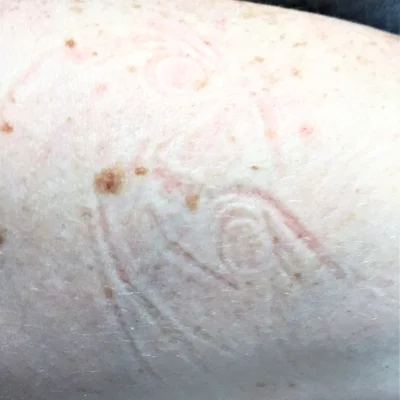He never got back his former skin tone after he started that landscaping job.
***
Congratulations on running that marathon! What’s your plan for getting your leg muscles back to normal?
***
Just three weeks after filming wrapped up, Ryan Gosling was showing off his natural hair color again.
***
In most cases, we don’t think of bodies as singular and unchanging. Our hair grows. Our skin tans. Our feet callus and blister. Our muscles and movements are shaped by work and exercise. So there is something strange about the examples above. But what about this one?
Her baby was born two years ago, and she still hasn’t lost the weight.
Ah, that is more familiar. Women’s bodies, we think, have an ideal shape—a slim, maidenly form, which can perhaps be attained without much effort in adolescence but require diligent maintenance thereafter. We must be mothers, but seem physically untouched by motherhood.
This is well-trodden—if worthily trodden—ground. The deliberately unattainable beauty standards around weight and waistline have been well explored by feminist writers over the past few generations. But since having my second child, I’ve been thinking about other kinds of bodily changes associated with motherhood. We talk a lot about weight gain and stretch marks, and whisper in women-only spaces about pelvic floor problems. But the story does not end here.
As I learn in prenatal and postpartum yoga classes, the body shifts in multifaceted ways during pregnancy. The center of gravity shifts; the hips widen. The feet and ankles swell. Blood volume increases. Appetites change. Some of these changes reverse after birth; others do not. One of my friends had a new shoe size forever after her first pregnancy. She donated a whole closet full of beloved shoes, including her perfectly-broken-in hiking boots.
Knowledge, too, is stored in the body. My second labor was a quarter the length of my first—a dramatic but not altogether unusual difference, according to my midwife. The body knows. Dive into the pain. My milk came in faster this time, too. And when my newborn son cried, rooted, champed ineffectively at the breast, sparking waves of toe-curling pain, I knew what to do: hold him closer. Dive into the pain.
The imprint of my nursing baby's ears on my forearm.
I remembered a newborn’s mews and squirms—what they mean, what to do with my body in response. Hold his flailing arms in close until he stills in slumber—and then hold him longer, until he stops startling and grows heavy. Angle his body so the bubbles of air he gulps can come back up. Stay still as he sleeps on my shoulder, though I am starving and my arms are painfully stiff. Hold him steady even as his tiny, sharp fingernails dig into my skin. Dive into the pain. I can haul a baby, a toddler, and three bags of groceries in from the car. I can sleep curled awkwardly around my son’s sleeping form, find his questing mouth in full darkness.
But can I fit back into my jeans?
